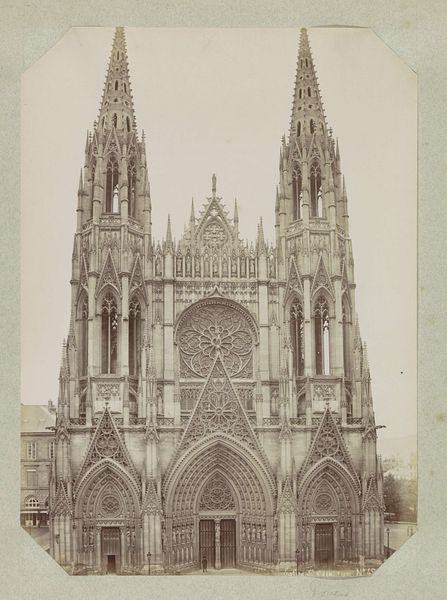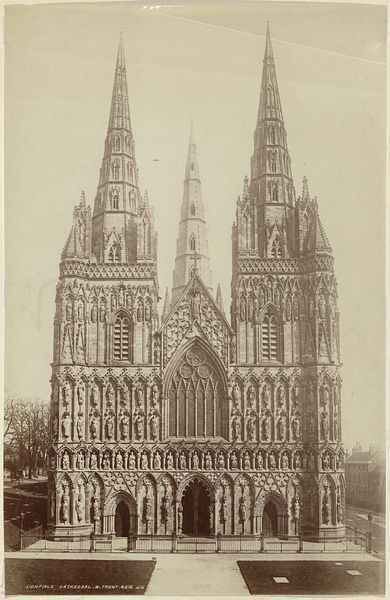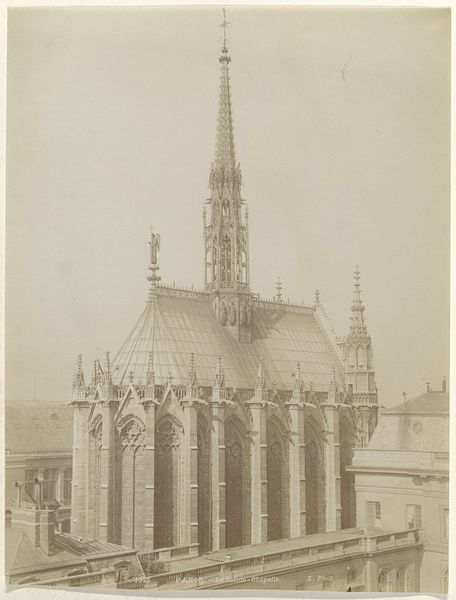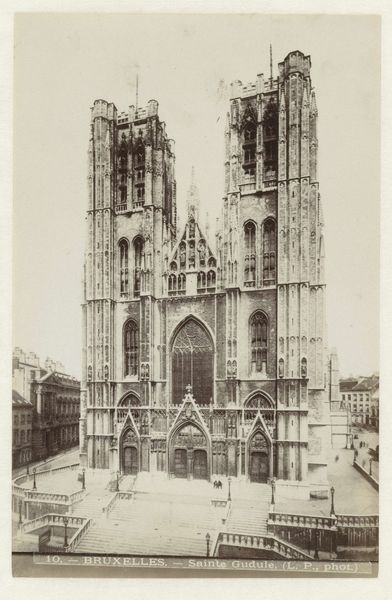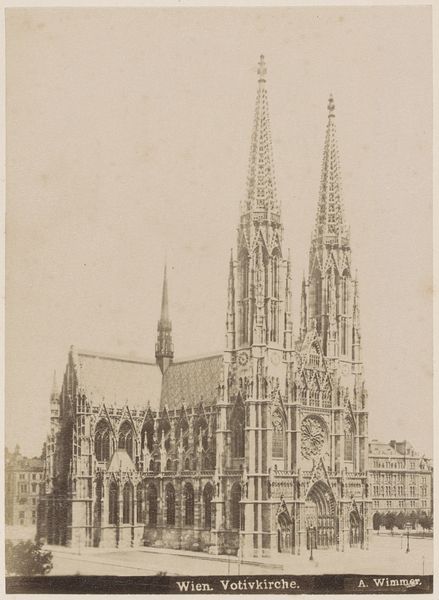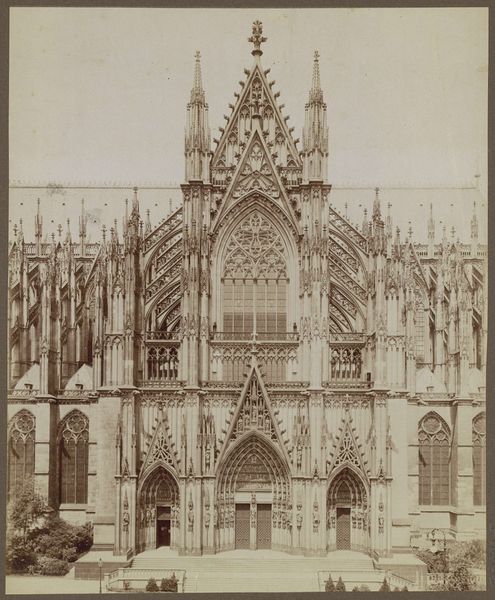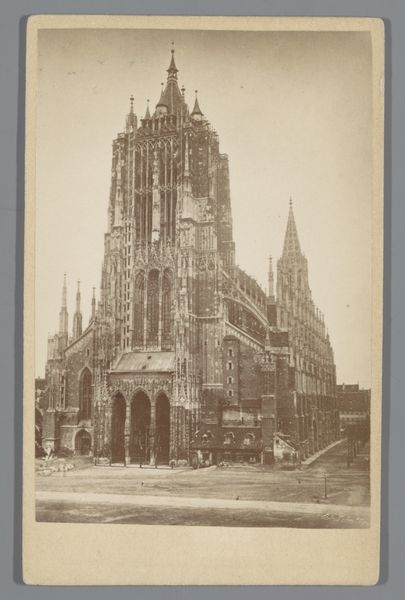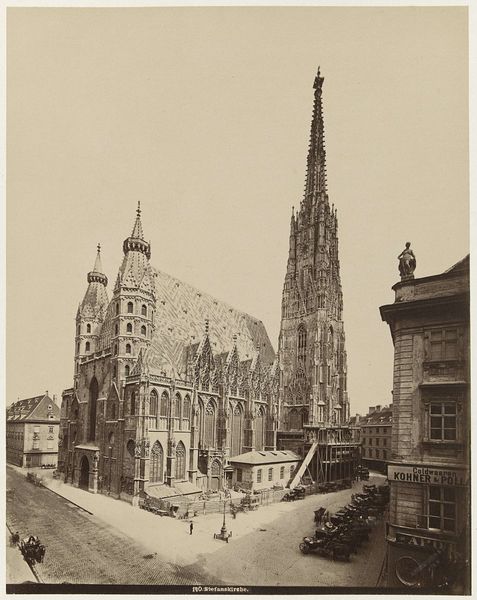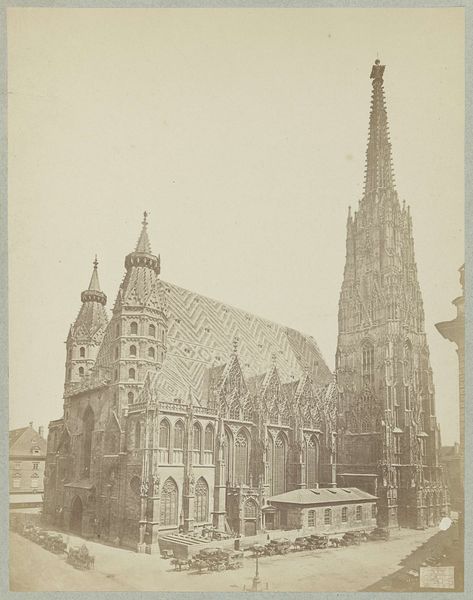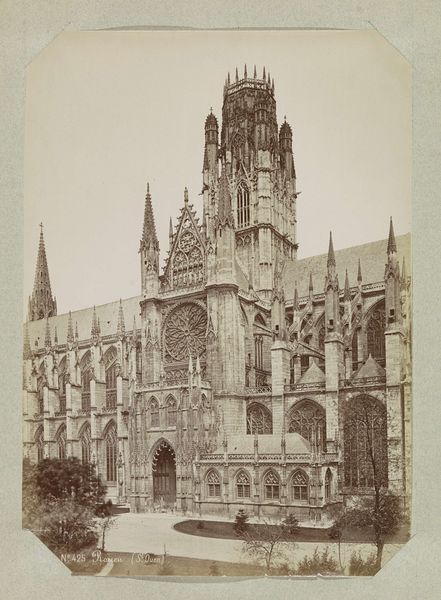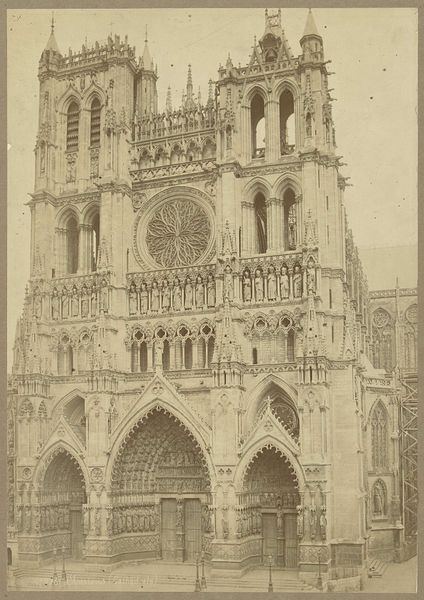
print, photography, architecture
#
medieval
# print
#
archive photography
#
photography
#
historical photography
#
architecture
Dimensions: height 273 mm, width 207 mm, height 404 mm, width 305 mm
Copyright: Rijks Museum: Open Domain
Editor: Here we have Neurdein Frères' photograph, "Onze-Lieve-Vrouwekerk in Laken," dating from around 1872 to 1908. It's a fascinating image of this imposing church rendered in what looks like albumen print. It's imposing but it feels almost like a stage set. What do you make of this image? Curator: I see a powerful visual document rooted in a specific sociopolitical context. The late 19th century was a time of intense nation-building across Europe. Revivals of medieval architectural styles were intentionally linked to ideas of national identity and a supposed shared cultural heritage. Doesn't this image seem to glorify an imagined past? Editor: I see that! So the church isn't just a church. It is more about nationhood, correct? Curator: Precisely! This photographic rendering, particularly during the fin-de-siècle, idealizes architectural achievements to reinforce the narrative of a unified, glorious Belgian identity. But what voices are often silenced in these grand narratives? Who were the workers, the everyday people whose labor actually constructed such monumental structures? Editor: Right, we don't often consider their experiences or their representation within this visual history. Curator: And beyond that, what about the displacement, both physical and cultural, that such "progress" often entails? It is key to remember whose stories are excluded from these seemingly neutral images. Consider how wealth is being spent during the Gilded age. What social issues are at play, hidden from sight? Editor: That definitely makes me look at this in a completely different way now. It's no longer just an architectural photograph, but a cultural artifact loaded with ideology. Thank you! Curator: The power of art lies in its ability to spark dialogue. Keep questioning what you see.
Comments
No comments
Be the first to comment and join the conversation on the ultimate creative platform.
